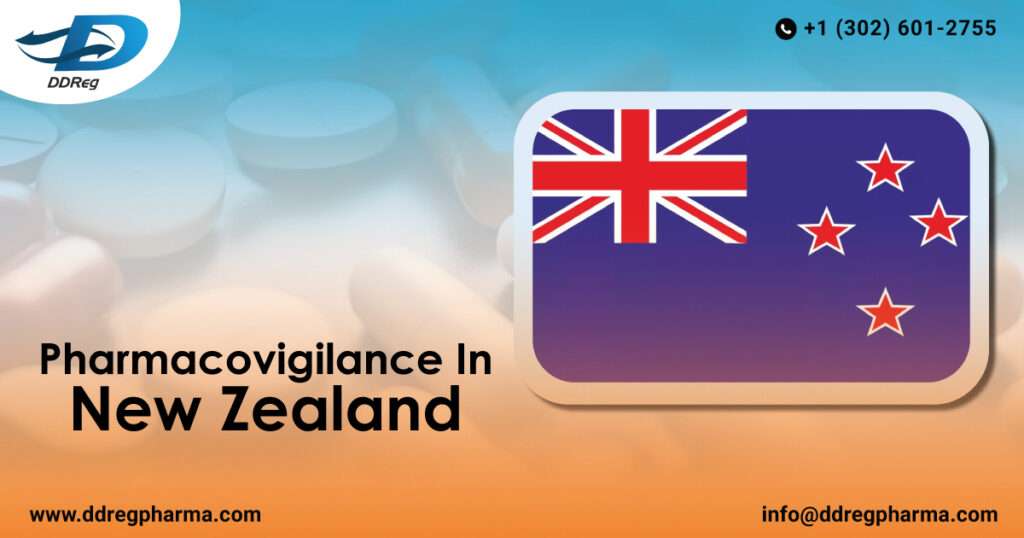Medsafe is responsible for regulating pharmaceutical products in New Zealand and operates under the Medicines Act of 1981, which requires sponsors to report any significant adverse effects of their medications. The Guidelines on the Regulation of Therapeutic Products in New Zealand” (GRTPNZ) outlines this requirement and also includes a Pharmacovigilance (PV) guidance document. This document defines the PV responsibilities for sponsors whose products are available in New Zealand. In March 2024, the guidelines were updated under the “Guideline on the Regulation of Therapeutic Products in New Zealand: Pharmacovigilance (Edition 3.0)” and will take effect on July 1, 2024. The update aims to streamline and strengthen pharmacovigilance practices.
The updated guidelines will help sponsors maintain a robust system for monitoring and evaluating the safety of medicines, ensuring they continue to meet New Zealand’s stringent public health standards.
New Zealand’s Role in Global Pharmacovigilance
New Zealand participates in the WHO International Drug Monitoring Programme, maintaining its pharmacovigilance system through Medsafe. They collect post-market safety information via spontaneous reports and other sources.
Medsafe relies on a variety of sources to gather post-market safety information, including spontaneous reports from healthcare professionals, patients, and pharmaceutical companies. These reports, along with data from clinical studies, academic research, and other safety monitoring activities, help Medsafe and other regulatory bodies identify potential safety concerns with medicines. By actively collecting and evaluating safety information, New Zealand can respond quickly to emerging risks and make necessary regulatory adjustments.
The Medicines Adverse Reaction Committee (MARC), a group of experts, advises Medsafe on safety concerns and helps improve the risk-benefit balance of medicines. Based on these safety assessments, Medsafe may take regulatory actions such as informing healthcare professionals and the public, updating product data sheets, or even suspending or revoking the approval of a medicine if necessary.
Sponsor Responsibilities
Sponsors must maintain a system for monitoring and reviewing safety data on their medicines, designating a pharmacovigilance contact to ensure the accurate reporting of Individual Case Safety Reports (ICSRs). Report adverse reactions, especially serious ones, to the New Zealand Pharmacovigilance Database within 15 days, as per the reporting guidelines.
In addition to adverse event reporting, sponsors must engage in regular safety assessments to evaluate the ongoing safety profile of their products. This involves submitting Periodic Benefit-Risk Evaluation Reports (PBRERs), which provide detailed updates on the safety and efficacy of a medicine based on the latest available data. Sponsors also use Risk Management Plans (RMPs) to identify, assess, and mitigate any potential risks associated with their products..
Signal Management
Signal management is the process of identifying, validating, and evaluating potential safety concerns with medications. This includes signals from ICSRs, data collected over time, published research, and clinical studies. Proper investigations ensure that any potential risks are identified and quantified accurately.
Once a potential signal is identified, Medsafe works with sponsors to validate the signal and assess whether any regulatory action is required. This may involve further investigation into the risk, including post-market studies or more targeted safety monitoring.
When Medsafe identifies a significant safety issue, it may take regulatory actions to mitigate the risk, such as issuing safety warnings, updating product labeling, or withdrawing the product from the market entirely. Additionally, Medsafe keeps healthcare professionals and the public informed about safety issues through timely and transparent communication. https://theguestblogs.com/.
Safety Issue Reporting
Sponsors must notify Medsafe about serious safety issues (SSIs) within 72 hours and other safety issues (OSIs) within 30 calendar days. Ongoing safety assessments may involve Periodic Benefit-Risk Evaluation Reports (PBRERs) and Risk Management Plans (RMPs), which ensure medicines maintain a favorable benefit-risk balance.
Conclusion
New Zealand prioritizes medicine safety by adhering to both national and international pharmacovigilance standards. A collaborative effort between regulatory bodies, sponsors, and healthcare professionals is key to maintaining medication safety. For over 15 years, DDReg has been providing comprehensive pharmacovigilance services to ensure effective safety evaluation and compliance. Reach out to our experts for end-to-end pharmacovigilance solutions.
For More, Check out the Blog
https://resource.ddregpharma.com/blogs/pharmacovigilance-in-new-zealand/






